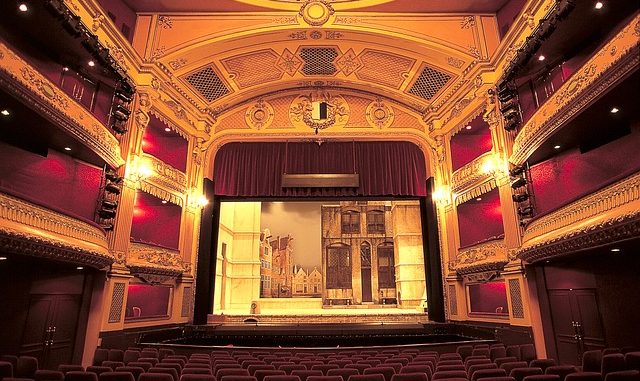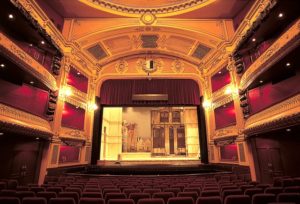
“How do I bring my encounter’s setting to life?” This is a question I have found myself asking over and over again recently. It’s a weakness I feel when I run a session, as the concept that I had in my mind doesn’t come to life in quite the dramatic fashion I had hoped. Being a GM, I am always looking for ways to make the session, or individual encounters more fun, more memorable. Since you’re reading this, I am guessing you are pursuing the same quest.
Thanks in large part to FFG’s Star Wars RPG and its successor, Genesys RPG, my games have become more narrative, less static. With a change in style towards a more narrative style, I’ve moved away from prep-heavy story design. I now try to the set the scene and let the story unfold based on the character’s actions. It has become something more like improvisational theater.
So this lead me to look at how creative writers answer this same question. How do I design a scene that is interesting and can move the story forward? Let me start with an admission, I am a hopeless researcher… I am constantly looking at how others have solved similar challenges and try to apply these approaches to my own work and process. Basically, why reinvent the wheel if I can just adapt a solution and use it to my own purposes? Out of the Google Vortex, I came upon the following core elements of making a setting come to life:
and can move the story forward? Let me start with an admission, I am a hopeless researcher… I am constantly looking at how others have solved similar challenges and try to apply these approaches to my own work and process. Basically, why reinvent the wheel if I can just adapt a solution and use it to my own purposes? Out of the Google Vortex, I came upon the following core elements of making a setting come to life:
- Time
- Place
- Mood
- Context
This main source of my inspiration can be found here: https://www.nownovel.com/blog/elements-setting/
It covers the details of each of these elements and how to weave this into your narrative. But let me summarize and try to show how I applied this to the fiction and narrative found in a RPG session.
Time – This can and should be a reference to both its place in the era of the world and place within the session. When using this element in my planning/prep, I use two bullets. First, its date in the campaign/session timeline. Second, its position within the session itself. The key with this setting element is understanding when in your timeline this location exists and when in your session.
For example, a Star Wars location would look like this in my notes:
Time – several years after the Return of the Jedi; Season 1,Episode 5, Act 2, Scene 4 (I would abbreviate this into S1E5A2C4).
This coding is a personal preference. I like to use Act and Scene references for placing the location within a session. I also use shorthand because, well, I’m lazy. One other reason to record/mark when the location is in your session is so that you can allow it to be “living.” That’s just a fancy way of saying that the this location will change over time and if the players return here, something about it needs to change.
Place – Well, it’s a location that I’m rambling on about so obviously it needs a “where”! The critical part of a location’s place, in terms of setting elements, is how it informs the Mood and Context. Without knowing when and where we are in the story world or the session, we can’t understand what the Mood and Context are and how that impacts the characters and their choices.
I will continue with our previous example:
- Time – Several years after the Return of the Jedi; Season 1,Episode 5, Act 2, Scene 4 (S1E5A2C4)
- Place – Old Industrial Sector, Nar Shaddaa, Hutt Space
So now the Location has a Time, and a Place. It needs to have a Mood and Context to fully flesh it out and make it come alive.
Mood – This is the atmosphere of the place, how you want the characters to feel about where they are. Use adjectives to convey the atmosphere, it’s not a physical description but the emotions you want to evoke in the players when they’re characters arrive at this location.
Carrying on with our previous example:
- Time – Several years after the Return of the Jedi; Season 1,Episode 5, Act 2, Scene 4 (S1E5A2C4)
- Place – Old Industrial Sector, Nar Shaddaa, Hutt Space
- Mood – Tense, Desperate, Suspicious
This begins to breathe life into the Location. I can see a clearer mental image of this place and now I can describe it using these guide posts fairly easily. It informs any prepared description I want to include in my session notes but it can also provide quick guidance for me when I have to improvise and create “on the fly.”
Finally, I add in the last element, Context:
- Time – Several years after the Return of the Jedi; Season 1,Episode 5, Act 2, Scene 4 (S1E5A2C4)
- Place – Old Industrial Sector, Nar Shaddaa, Hutt Space
- Mood – Tense, Desperate, Suspicious
- Context – The PCs are here to negotiate terms for carrying illicit cargo into a sector that is still under the crumbling Imperial control.
The Location now has a “What, Where, When and Why.” The “How” is the role of the players and their characters in my opinion. The Location has a character all its own. A final point on Context is that it should include or at least point toward the conflict in the scene. Without conflict, I just skip through it as “off-camera/off-stage.” A good example of this is buying equipment. Unless there’s story-critical piece of gear needed, I always have that happen outside of a scene. Where’s the conflict in needing a new blaster? Unless that blaster has something that makes it very hard to obtain, then it becomes its own story. Hopefully, that’s not a new concept for anyone reading this.
To complete the location, I would add a Cast of Characters. Simply put, this is a quick list of NPCs that the players and their characters can interact with.
- Time – Several years after the Return of the Jedi; Season 1,Episode 5, Act 2, Scene 4 (S1E5A2C4)
- Place – Old Industrial Sector, Nar Shaddaa, Hutt Space
- Mood – Tense, Desperate, Suspicious
- Context – The PCs are here to negotiate terms for carrying illicit cargo into a sector that is still under the crumbling Imperial control.
- Cast of Characters –
- Female Twi’lek Bartender – Tough as nails, known for knocking out a drunken Aqualish – Think Marion Ravenwood Indiana Jones
- Bothan Job Contact – Anxious and furtive, he was wants to close the deal and move the goods before the Hutts find out what he is doing.
- Shifty Looking Devaronian at the Bar – There’s a bounty on this one and she’s expecting a hunter at any moment. Trying to find a way off from Nar Shaddaa, quickly.
- Bored, Distracted Bith Musician – He’s stuck playing this dump and no one recognizes him as Jabba’s court musician before Figrin D’an and Max Rebo. – Think Billy Joel Piano Man.
- Droid Waitress – A re-purposed Imperial Spy Droid, secretly surveils the clients which the Bartender uses for blackmail.
I can quickly people it with NPCs that fit the Mood and Context. I can also deliberately put one, maybe two, that are in contrast to those two elements to twist the Mood and even Context further. It’s important to not get caught up in the details, long-form descriptions, stat blocks or other devices, at this point. There will be time of enough for that later. Also, I have found that players tend to latch onto the least expected NPCs. A throw-away Imperial Security Trooper went from random “extra” into a full-blown PC in a recent session. But that’s a story for another time.
So what’s next? In the next edition of the Living Locations, I will show how you can change the setting elements and get an entirely different location even though they’re both bars. After that, I will look at how to implement the tool into a session and encounter plan for a game session.
